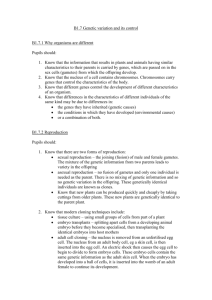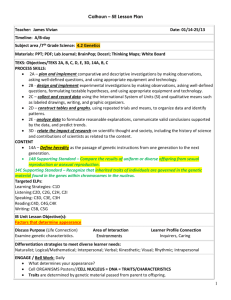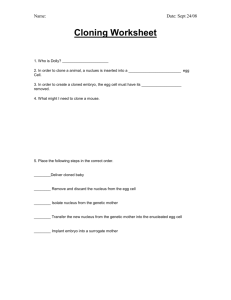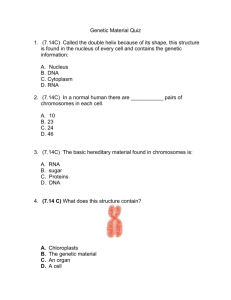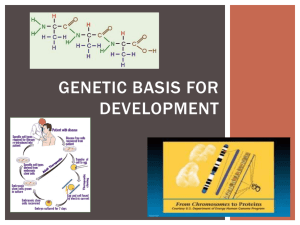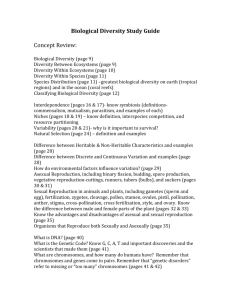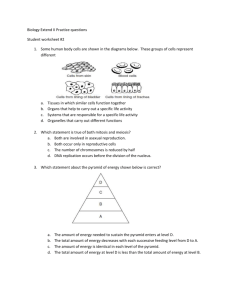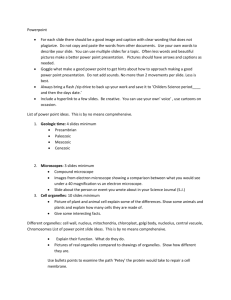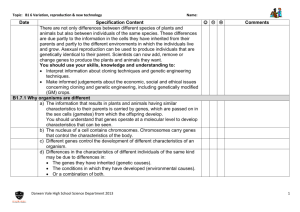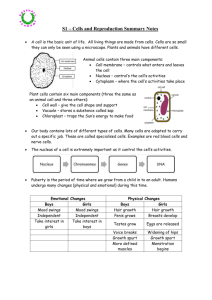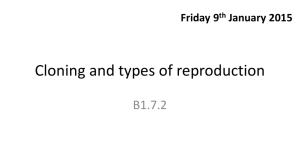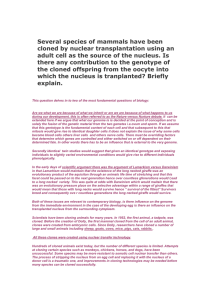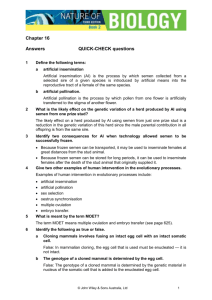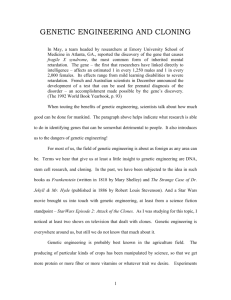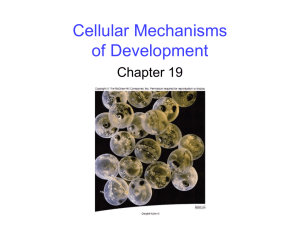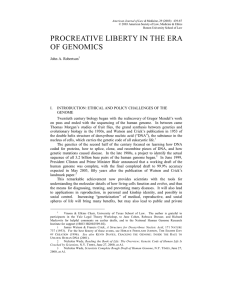B1b 6 Variation
advertisement
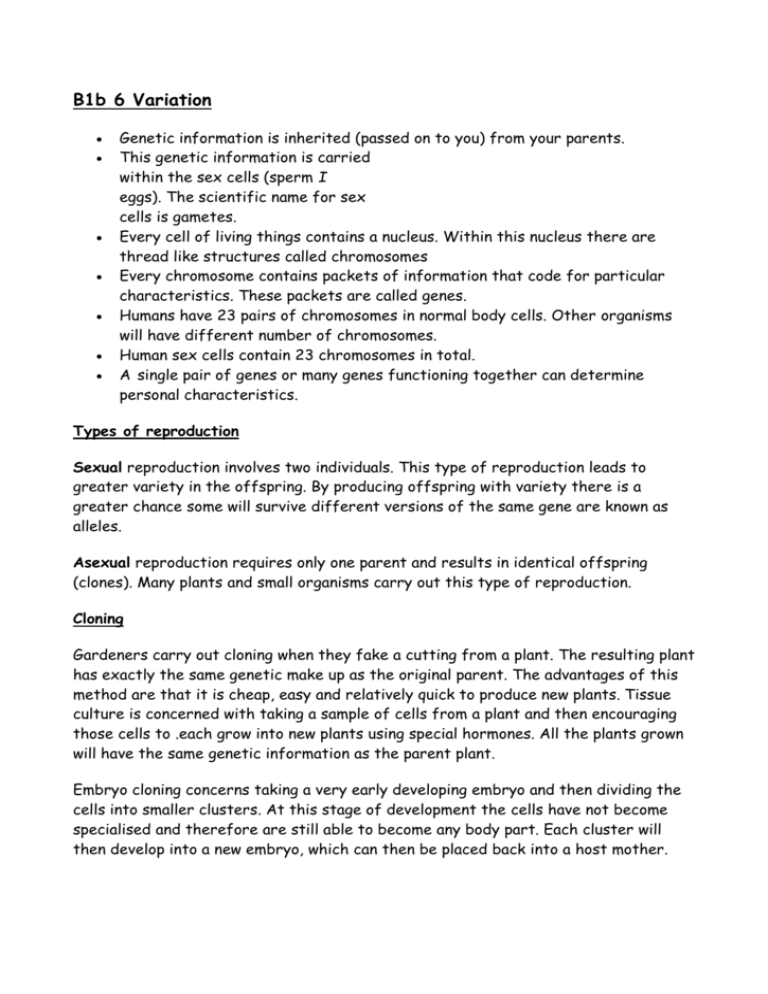
B1b 6 Variation Genetic information is inherited (passed on to you) from your parents. This genetic information is carried within the sex cells (sperm I eggs). The scientific name for sex cells is gametes. Every cell of living things contains a nucleus. Within this nucleus there are thread like structures called chromosomes Every chromosome contains packets of information that code for particular characteristics. These packets are called genes. Humans have 23 pairs of chromosomes in normal body cells. Other organisms will have different number of chromosomes. Human sex cells contain 23 chromosomes in total. A single pair of genes or many genes functioning together can determine personal characteristics. Types of reproduction Sexual reproduction involves two individuals. This type of reproduction leads to greater variety in the offspring. By producing offspring with variety there is a greater chance some will survive different versions of the same gene are known as alleles. Asexual reproduction requires only one parent and results in identical offspring (clones). Many plants and small organisms carry out this type of reproduction. Cloning Gardeners carry out cloning when they fake a cutting from a plant. The resulting plant has exactly the same genetic make up as the original parent. The advantages of this method are that it is cheap, easy and relatively quick to produce new plants. Tissue culture is concerned with taking a sample of cells from a plant and then encouraging those cells to .each grow into new plants using special hormones. All the plants grown will have the same genetic information as the parent plant. Embryo cloning concerns taking a very early developing embryo and then dividing the cells into smaller clusters. At this stage of development the cells have not become specialised and therefore are still able to become any body part. Each cluster will then develop into a new embryo, which can then be placed back into a host mother. Fusion cell cloning — the stages: The nucleus is removed from an adult cell Nucleus is also removed from an egg cell from an animal of the same species Nucleus from the original cell is placed inside the egg cell A small electric shock fuses the egg and nucleus together The new fused nucleus and egg cell start dividing (cell division) to create a new embryo 6. Develops as per normal - identical to the original animal from which the adult cell was removed 1. 2. 3. 4. 5. Adult cell cloning - the above method used to produce cloned entire animals. Advantages Disadvantages Possible to save animals that are threatened or extinct Reduces variation Able to produce great numbers of medically useful cloned animals Ethical / moral concerns Genetic Engineering - Genetic engineering is concerned with the altering of the genetic information within an organism Advantages Disadvantages Possible to manufacture large amounts of desired proteins (such as insulin) Unknown long-term effects. What if the genes escape into the wild, do they cause any harm when these modified foodstuffs are eaten Being a relatively new science there are many questions that are not yet answered. Improves growth rates and quality of foodstuffs. Able to get plants to grow in difficult conditions Future possibilities — will people want to genetically engineer their children for particular traits? May be possible in the future to cure illnesses by inserting unaffected DNA. Moral / ethical concerns


